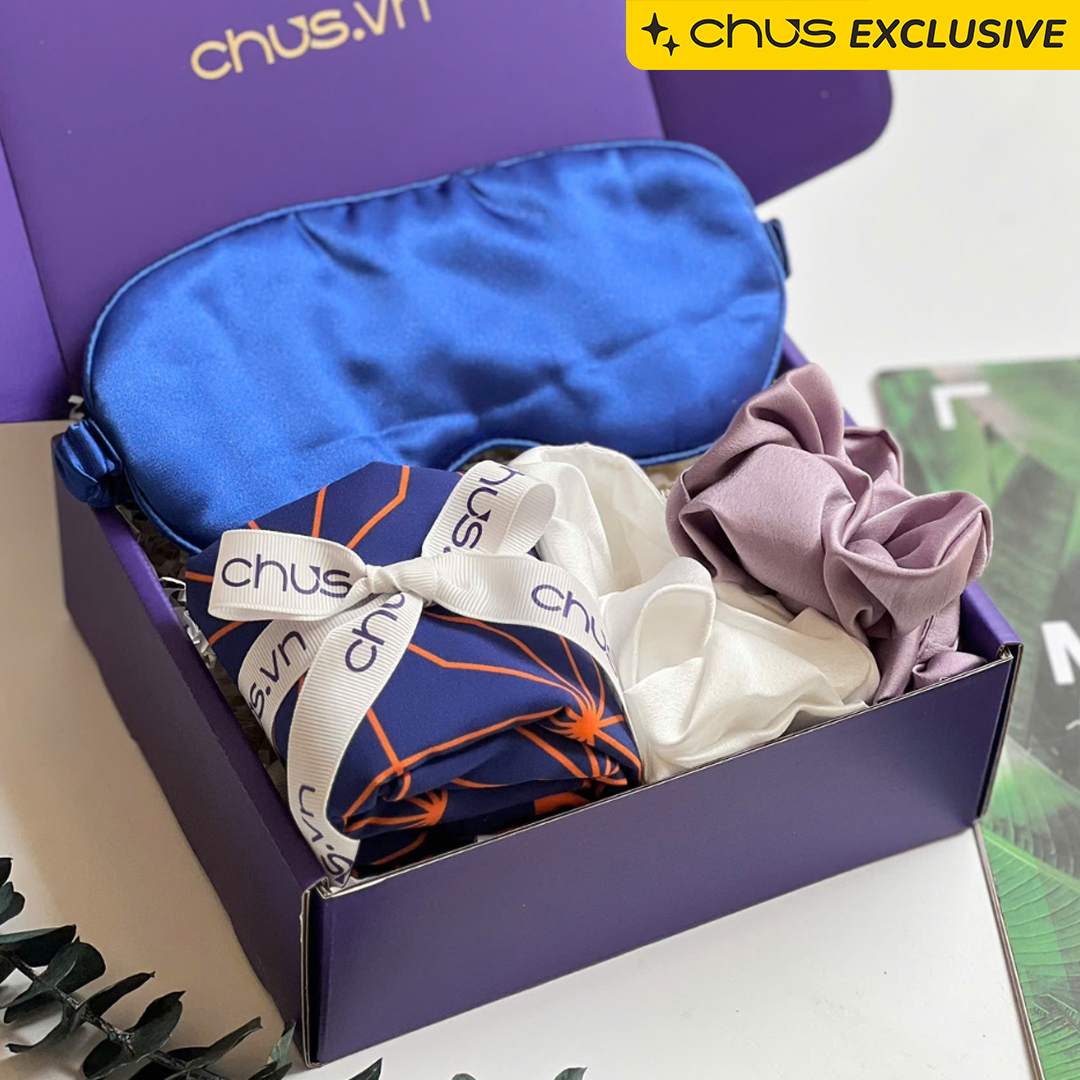- Jun 10, 2025
Vietnam’s Historic Shift in 2025: From Counterfeit Hub to Global “Made in Vietnam” Powerhouse
- Key Questions Answered
- A Turning Point Like Korea in 1988
- Industries Poised to Boom
- How Vietnamese Brands Can Win
- How can platforms like CHUS support this transformation?
- What’s Next? Timeline for Growth
- Why is timing critical for Vietnamese brands?
- How Consumers Can Drive the Change
- Conclusion: A Defining Moment for “Made in Vietnam”
In 2025, Vietnam is undergoing a historic transformation. After years of struggling with counterfeit goods, the country is now cracking down harder than ever—shutting down fake markets, enforcing IP laws, and actively promoting authentic Vietnamese brands. The "Made in Vietnam" label is becoming a symbol of quality, culture, and national pride.
But what sparked this sudden change? How does it affect local businesses, global consumers, and e-commerce platforms like CHUS.vn? Let's explore in this article.
Key Questions Answered
1. Why is Vietnam cracking down on counterfeit goods in 2025?
In May 2025, the Vietnamese government launched a nationwide campaign to combat smuggling, trade fraud, counterfeit goods, and intellectual property violations. This decisive move was driven by:
- Public outrage over fake milk, supplements, and medicine remaining on the market for years
- Pressure from trade partners like the U.S. and EU to enforce IP protection
- A new directive from Prime Minister Pham Minh Chính mandating a multi-agency crackdown
- Shocking figures: Over 34,000 violations uncovered in just the first 4 months of 2025, including:
- 1,100+ cases involving counterfeit goods and IP violations
- 8,200+ cases of smuggled or prohibited goods
- 25,100+ cases of commercial and tax fraud
This campaign, starting from May 15, 2025, marks the government’s strongest effort yet to eliminate fakes and elevate the reputation of “Made in Vietnam” products.

Many counterfeit products were found at Saigon Square. Image: Người Lao Động Newspaper.
>> Read more: US 46% Tariff on Vietnamese Goods: Time to Support Local!
2. What does this shift mean for Vietnamese brands?
This is a once-in-a-generation opportunity. As counterfeit goods vanish, Vietnamese brands have a clean slate to:
- Scale innovation
- Strengthen trust through authenticity
- Build global reputations
- Leverage platforms like CHUS to reach new markets
3. What can Vietnamese consumers do to support this change?
- Buy from verified local brands
- Choose platforms like CHUS that guarantee authenticity
- Share positive experiences with authentic products
- Gift Vietnamese goods to promote national pride
A Turning Point Like Korea in 1988
Much like Korea post-1988 Olympics, Vietnam is using external pressure as a launchpad for internal reform. Korea's success story—clearing counterfeit markets, supporting SMEs, and exporting culture—offers a proven roadmap. Now, Vietnam is taking similar steps, but with one major advantage: the digital era allows it to move faster.

The 1988 Seoul Olympics marked Korea's transformation from war-torn nation to global economic power. Image: Getty Image.
Industries Poised to Boom
1. Fashion & Accessories
Vietnamese designers can fill the vacuum left by counterfeit imports with authentic, well-designed apparel, scarves, jewelry, and bags that celebrate local identity.
>>> Explore Vietnam’s traditional crafts turned modern
2. Food & Wellness
Vietnamese chocolate, herbal teas, and health supplements sourced from local farms can become export-worthy goods—highlighting purity, traceability, and tradition.
>>> Discover why Vietnamese chocolate is a thoughtful and unique gift
3. Baby & Household Products
Sustainably made, high-quality Vietnamese products can quickly win consumer trust. Brands that prioritize safety, design, and cultural relevance will thrive.
>>> Sustainable Vietnamese brands you should know
How Vietnamese Brands Can Win
1. Innovate with Purpose
- Develop unique, Vietnam-centric designs
- Use traditional materials with modern function
- Focus on sustainable practices

Vietnamese bamboo craftsmanship: traditional materials transformed into modern sustainable products. Image: Customized Bamboo Gift Set (Bamboo Tumbler and Cup) by Tre Việt
2. Build Cultural Brand Stories
- Align with Vietnamese folklore, heritage, and symbols
- Collaborate with local artists and storytellers
- Use content marketing and short-form videos to spread narratives

Vietnamese dragon folklore transformed into modern accessories - authentic cultural storytelling that resonates with local consumers. Image: Classic Red Hand-Drawn Leather Lighter - Ly Dynasty Dragon Art by ĐỎ
>>> See how local brands are telling authentic stories
3. Ensure Trustworthy Distribution
- Avoid gray markets and informal resellers
- Partner with platforms like CHUS.vn that verify vendors
- Join curated “Made in Vietnam” gift sets to co-elevate brand reputation

CHUS curated gift sets demonstrate trusted distribution - verified authentic Vietnamese products with professional packaging that builds consumer confidence. Image: Feminine Silk Gift Box - Chus Exclusive Set With Eye Mask, Hair Tie & Scarf
How can platforms like CHUS support this transformation?
CHUS plays a crucial role in Vietnam's authentic brand ecosystem by:
- Providing verified authenticity for local products
- Offering curated collections of genuine Vietnamese brands
- Creating trust through rigorous vendor verification
- Supporting local artisans and manufacturers with platform visibility
- Facilitating collaborative gift sets like the authentic Vietnamese ceramic collections that showcase local excellence
CHUS connects consumers directly with Vietnamese artisans - supporting traditional craftsmanship while building trust in authentic local production.
>>> Find the perfect Vietnamese gift for any occasion: What Are the Best Vietnamese Gifts? (Complete Guide)
What’s Next? Timeline for Growth
Immediate Actions (Next 6 months)
- Audit supply chain for authenticity
- Invest in visual branding and packaging
- List products on trusted platforms
Medium-term Strategy (6-18 months)
- Expand SKUs rooted in culture
- Launch origin-based storytelling
- Develop export readiness plans
Long-term Vision (2-5 years)
- Become a recognized name abroad
- Win trust with certifications and transparency
- Contribute to a national brand of “authentic Vietnamese quality”
Why is timing critical for Vietnamese brands?
The window of opportunity is limited. Early movers who establish authentic brand positioning now will:
- Capture market share as counterfeits disappear
- Build consumer loyalty during the transition period
- Establish distribution partnerships before competition intensifies
- Create brand recognition that becomes difficult to challenge
How Consumers Can Drive the Change
Vietnamese consumers can accelerate this positive change by:
- Buy from trusted sources, not price-first sellers
- Choose local over imported fakes
- Supporting platforms like CHUS that guarantee authenticity and curate only genuine Vietnamese products
- Post positive reviews and recommend ethical brands
- Educating others about the value of authentic local brands
- Choosing corporate gifts that showcase Vietnamese heritage for business relationships
Conclusion: A Defining Moment for “Made in Vietnam”
Vietnam is seizing a rare moment to redefine itself. The era of counterfeit is ending—and a new era of authentic, quality-driven Vietnamese craftsmanship is rising. Much like Korea’s leap in the 1990s, this is Vietnam’s time.
Explore verified, authentic Vietnamese products on CHUS.vn — from handmade ceramics to modern accessories — and become part of this national transformation.
Sources: This analysis draws from recent reports by Reuters, Bloomberg, and Olympic historical documentation on Korea's transformation. For more insights about Vietnamese brand development and authentic local products, visit CHUS.vn.











